Hol Dir den wöchentlichen SPARTANAT-Newsletter.
Dein Bonus: das gratis E-Book von SPARTANAT.
Nachtsichtröhren Unterschiede
Eine detaillierte Analyse des Unterschieds zwischen den Bildverstärkerröhren PHOTONIS 4G und ECHO für Nachtsichtgeräte. 4G bietet höhere Leistung und Zuverlässigkeit, während ECHO ein gutes Preis-Leistungs-Verhältnis für kommerzielle Benutzer bietet.
Unsere Freunde von FALCONCLAW kennen viele Details von Nachtsichtgeräten. Heute teilen sie ihr Wissen über Bildverstärkerröhren (IIT) mit uns, nämlich den Unterschied zwischen dem PHOTONIS 4G und dem ECHO. Beide sind im Grunde Gen 3 IIT, lest unseren BASICS-Artikel für weitere Informationen. Aber jetzt zu ihren Erkenntnissen:
Wir wollten eine ehrliche Bewertung abgeben, und es ist so viel einfacher, den Unterschied zu erfassen, wenn man die Leistung der IITs mit ähnlichen Spezifikationen nebeneinander sieht. Wir alle wissen, dass PHOTONIS 4G IITs teurer sind als die meisten ihrer Konkurrenten. Selbst bei der Gegenüberstellung von Geräten mit ähnlichen Spezifikationen werden Sie feststellen, dass 4G-Geräte etwa 30 % teurer sind als z. B. ECHO-Geräte mit ähnlichen Metriken. Warum ist das so, und ist 4G wirklich den Hype wert?
PHOTONIS 4G
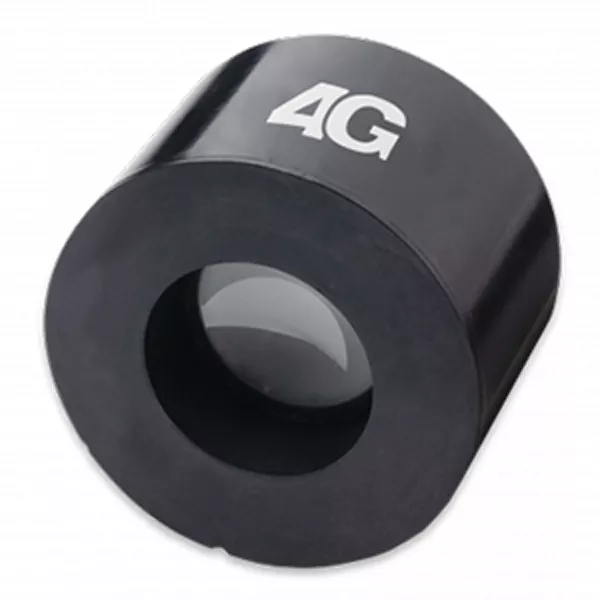
Die 4G-Technologie ist eine Reihe von Anforderungen, die durch Mindestspezifikationen der modernen Nachtsichttechnologie definiert sind, um den Endbenutzern die höchste Leistung in allen Feldbedingungen zu bieten.
Die Standards für die 4G Röhren sind definiert durch:
- Eine erweiterte Bandbreite der Lichtsammlung, um eine konsistent hohe Bildqualität in allen Umgebungen zu liefern (von unter 400 nm bis über 1.000 nm)
- Ein FOM Faktor über 1800
- Eine Auflösung immer über 57 lp/mm, auch in den am meist lichtverschmutzten Umgebungen, wie urbanen Gebieten oder beim Betreten eines Gebäudes, in dem das Licht plötzlich eingeschaltet wird
- Ein typischer 0,75-mm-Halo um die hellsten Objekte im Bild, um die höchsten Details um die Lichtquellen herum zu liefern
- Alle PHOTONIS 4G-Röhren haben eine erwartete Lebensdauer von mehr als 7500 Stunden und arbeiten bei extremen Temperaturen von -32 bis +49 °C während sieben Tagen.
PHOTONIS 4G vs ECHO
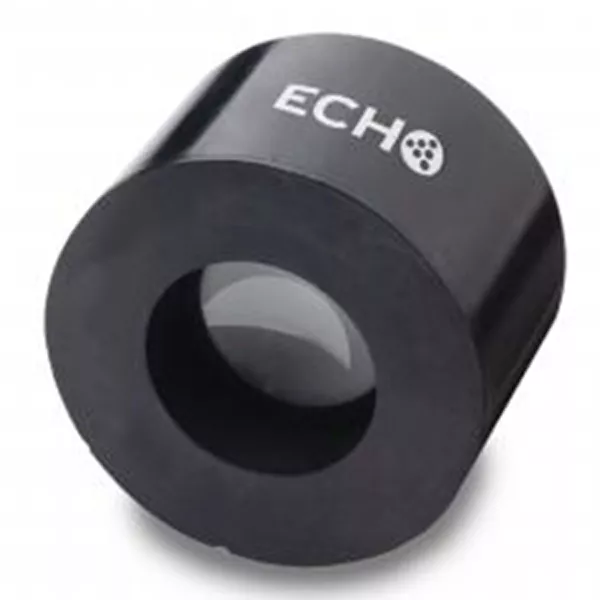
Sowohl PHOTONIS ECHO als auch 4G IITs stammen aus derselben Produktionslinie. Daher ist der ECHO im Vergleich zu anderen IITs auf dem Markt bereits ein qualitativ hochwertiges Produkt. Aber warum werden einige IITs als 4Gs und andere als ECHOs klassifiziert?
Zunächst einmal wird ein IIT nur dann als 4G eingestuft, wenn sie die militärischen Anforderungen übertrifft. Im Testprozess wird das Gerät als ECHO eingestuft, wenn es diese Anforderungen nicht erfüllt. Man könnte denken, dass wir nur über die auf dem Datenblatt gezeigten Röhrenspezifikationen sprechen. Ja, diese Attribute spielen eine Rolle bei der Klassifizierung der Röhre zwischen 4G und ECHO, aber der Hauptunterschied liegt außerhalb der angezeigten Spezifikationen.
Während des Tests durchläuft die Röhre eine Serie von Umwelttests (z. B. Überleben bei Temperaturen von -32 bis +49 Grad während sieben Tagen), Elektronik-, Haltbarkeits- (die Einheit wird mehr als 7000 Stunden dauern) und anderen Tests. Das bedeutet - Wenn ihr ein hohes Maß an Sicherheit benötigt, dass euer Gerät in allen Umgebungen und Bedingungen funktioniert und euch in den schlimmsten Momenten nicht im Stich lässt, greift zu 4G. Dafür ist die militärische Spezifikation da.
Zusätzlich zu erfolgreicheren Tests hat 4G im Allgemeinen:
- Weniger schwarze Flecken und Schatten
- 15 % höhere Verstärkung und Empfindlichkeit (nicht in der Spezifikation sichtbar), die die Hauptmerkmale für Lichtverstärkung sind
- Längere Lebensdauer (mindestens 7000 Stunden, ECHO hat keine definierte Lebensdauer)
- Einen breiteren spektralen Bereich, um in allen Umgebungen ein hochwertiges Bild zu liefern
- Einen kleineren Halo um die hellsten Objekte
- Höhere Mindestanforderungen für die meisten Merkmale
Die tatsächlichen Testergebnisse
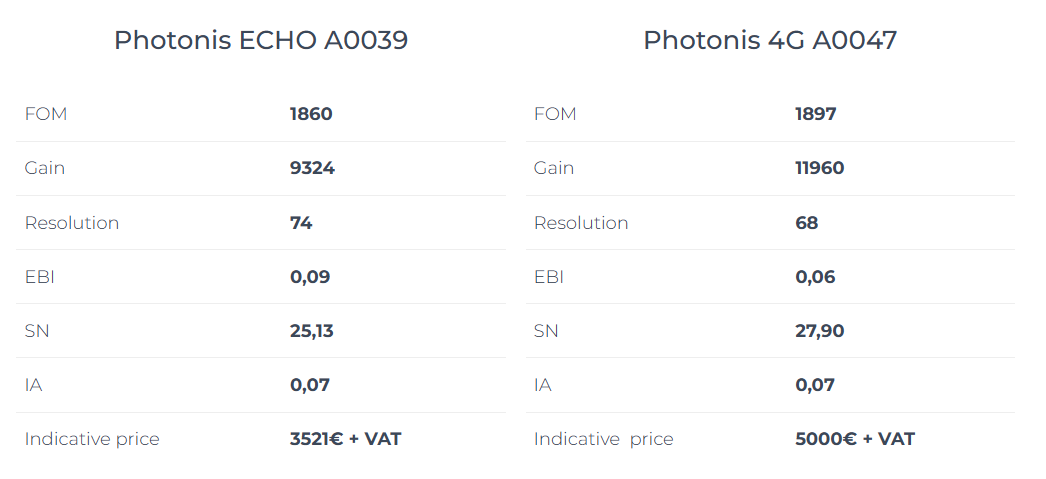
Auch wenn nicht alle Vorteile des 4G bei einem Leistungstest sichtbar sind (wie Lebensdauer oder Umwelttest), haben wir uns entschieden, einige unserer Geräte mit ähnlichen Spezifikationen herauszunehmen und in einer Reihe zu platzieren. Schauen wir uns also die tatsächliche Leistung der Geräte an.
Das folgende Material wurde an einem klaren Nachthimmel weit weg von großen Lichtverschmutzungsquellen wie Großstädten gesammelt. Es war Winter, also reflektierte der weiße Schnee das Licht der Sterne. Wir verwendeten dieselben Kameras mit genau denselben Einstellungen, um die Leistung der NV-Geräte zu erfassen.
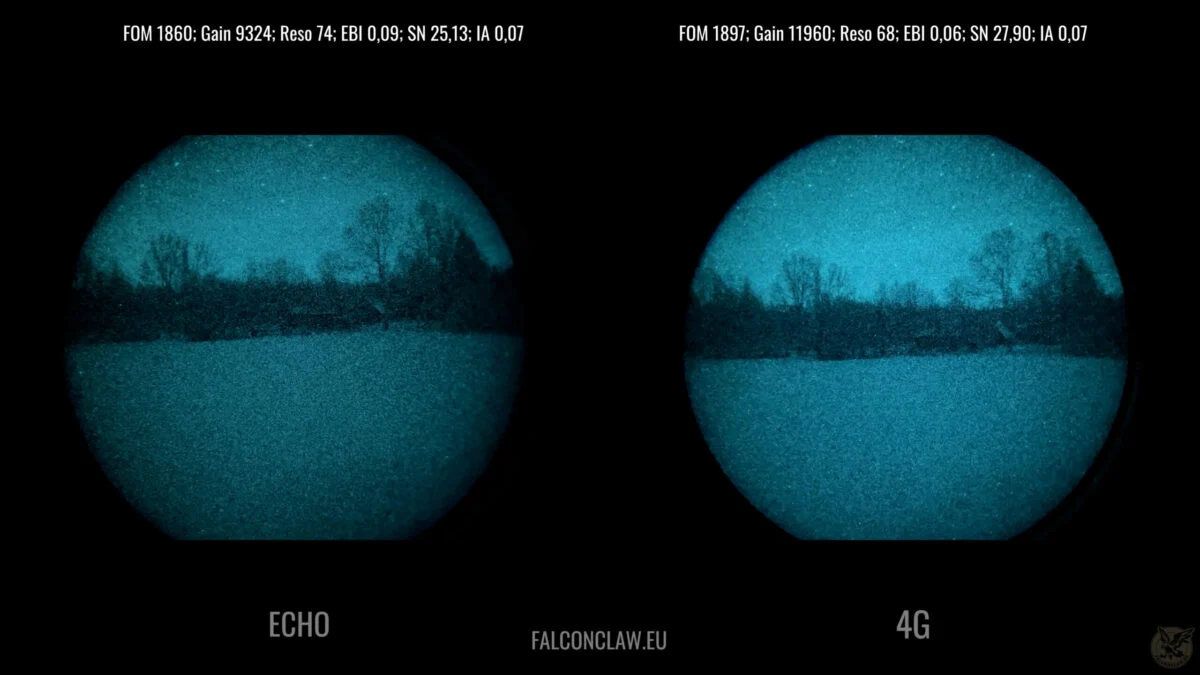
Wie ihr auf den Bildern sehen könnt, ist das 4G aufgrund der höheren Verstärkung heller und detaillierter, obwohl die Auflösung auf der 4G-Röhre niedriger ist. Wenn man die Leistung eines 4G und ECHO vergleicht, kann man selbst mit ähnlichen Attributen eine 10-15% höhere Leistung auf der 4G erwarten, da nicht alle Merkmale (wie Empfindlichkeit) auf einem Röhrendatenblatt angezeigt werden. Und der Leistungsunterschied wird deutlicher, wenn wir in den Wald gehen.
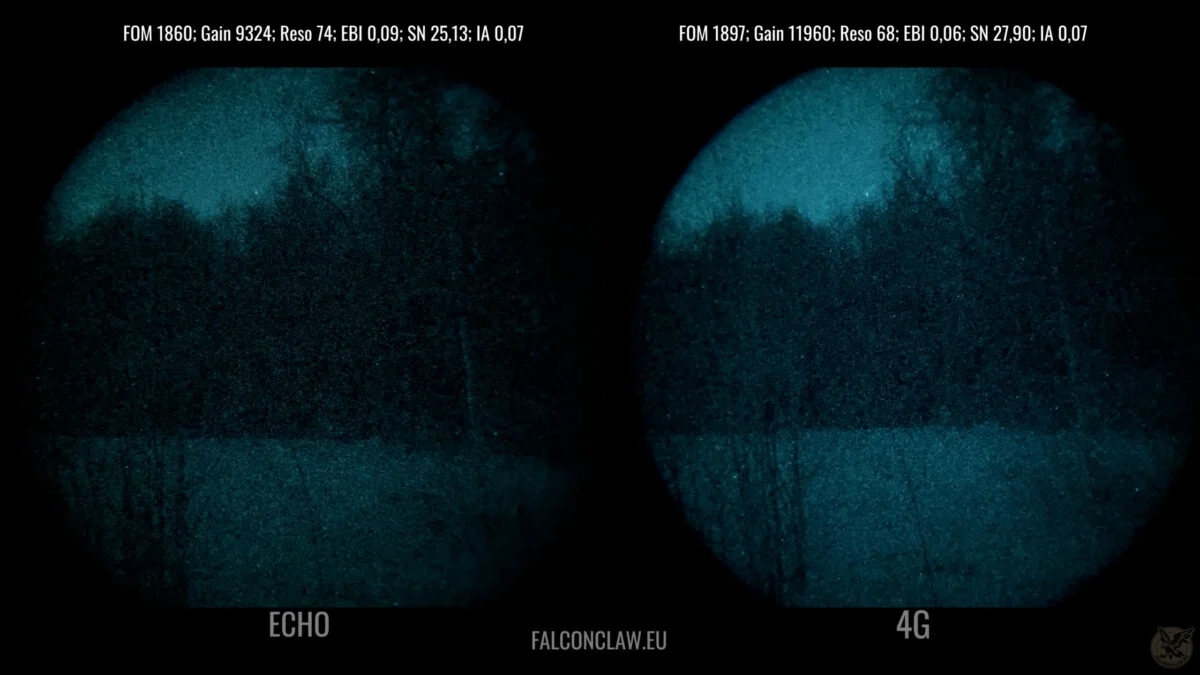
Als wir in dunklere Wälder wanderten, wurde die Umgebung für die IITs anspruchsvoller. Man kann deutlich erkennen, dass das Bild des 4G aufgrund der höheren Leuchtdichte und Empfindlichkeit schärfer und klarer aussieht.
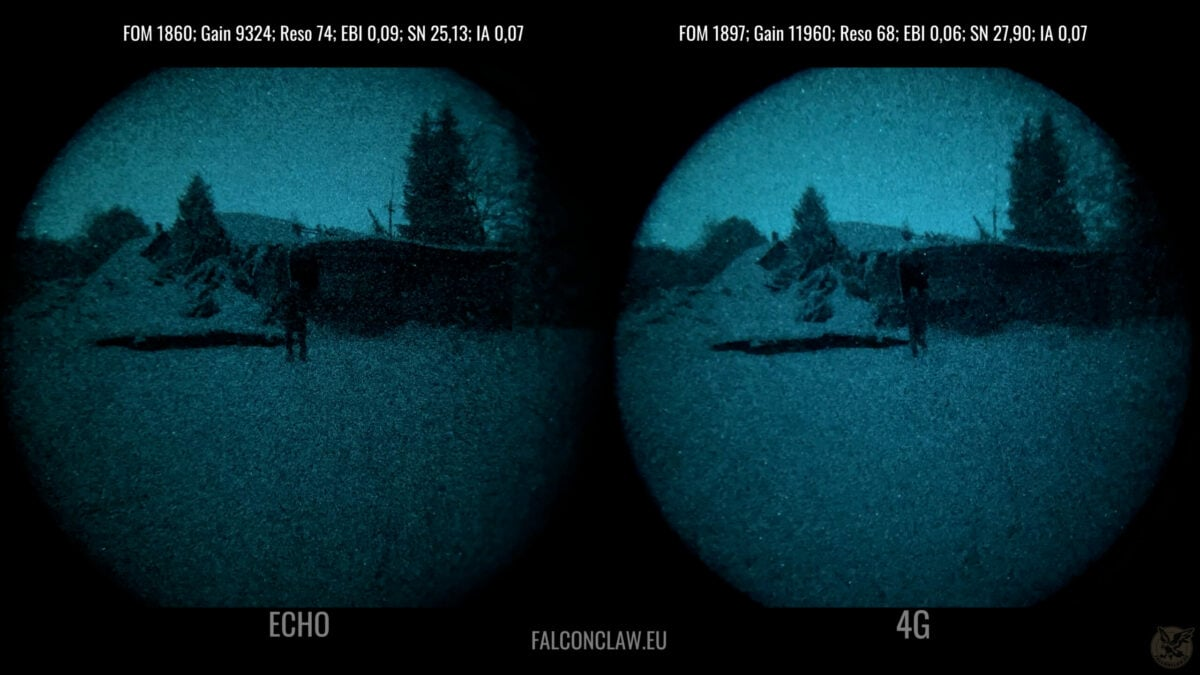
Beim Vergleich der Röhren in einer lichtreichen Umgebung ist der Unterschied nicht so klar.

Man kann etwas mehr Sterne auf dem 4G erkennen, aber das Bild ist ziemlich ähnlich.
Kommen wir zum Schluss
Die gute Nachricht ist, dass ECHO/ECHO+ aus derselben Linie wie 4G stammt. Die Basistechnologie ist also bereits überlegen zu jeder kommerziellen Linie. Wir haben einige außergewöhnliche ECHO-IITs aus den PHOTONIS Produktionslinien gesehen, mit absolut erstaunlichen Spezifikationen! Wir wissen, dass ECHO nicht die 4G-Militärstandards erfüllt, aber der heikle Teil ist, dass wir nicht wissen, wo im Testprozess sie 'gescheitert' sind. Hat es einige Umwelttests nicht bestanden oder stimmt etwas mit der Bildqualität nicht? Diese Information ist unbekannt.
Während ECHO ein erstaunliches Produkt für kommerzielle Benutzer mit einem sehr guten Preis-Leistungs-Verhältnis ist, könnt ihr euch mit 4G zu 200 % sicher sein, dass die Röhre unter sehr anspruchsvollen Bedingungen getestet wurde (sogar bis an die Grenze, die der IIT wahrscheinlich während seiner Lebensdauer nie wieder sehen wird). PHOTONIS 4G wird für Benutzer hergestellt, die ein zuverlässiges Nachtsichtgerät benötigen und keine Kompromisse bei Qualität oder Haltbarkeit eingehen
PHOTONIS online
FALCONCLAW online
SPARTANAT ist das Online-Magazin für Military News, Tactical Life, Gear & Reviews.
Schickt uns eure News: [email protected]
Werbung
Hol Dir den wöchentlichen SPARTANAT-Newsletter.
Dein Bonus: das gratis E-Book von SPARTANAT.


